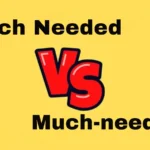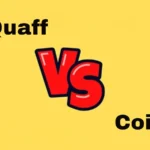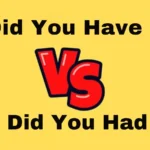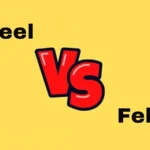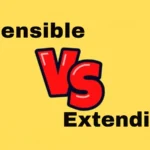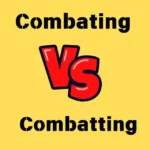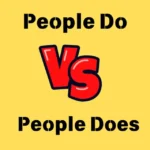In the fast-paced world of digital communication, abbreviations and acronyms have become a staple in texting, social media, and online chats.
One such abbreviation that has sparked curiosity is “OKG”. Many users encounter it in conversations on platforms like WhatsApp, Instagram, TikTok, and even professional messaging apps, leaving them wondering about its exact meaning.
Understanding OKG meaning in text is not just about decoding letters—it provides context for smoother communication, prevents misunderstandings, and enhances digital literacy.
People often search for this acronym to stay updated with current online slang or to ensure they respond appropriately in conversations.
While some acronyms have straightforward meanings, others like OKG can have multiple interpretations depending on context.
This article dives deep into the definition, usage, and nuances of OKG to give readers a clear understanding.
Meaning & Definition
The term OKG in text primarily serves as an abbreviation or shorthand in digital messaging. Its most common interpretation is “Okay, Good”, used to acknowledge a message positively or indicate agreement.
This simple combination conveys affirmation while saving time in fast-moving chats. However, like many online acronyms, its meaning can be flexible, adapting to tone, context, or platform.
In informal conversations, OKG can express enthusiasm, approval, or confirmation without typing a lengthy response. Essentially, it functions as a quick, friendly, and efficient communication tool, especially in casual messaging environments.
Background
Abbreviations like OKG have emerged alongside the rise of instant messaging and social media platforms. The need for brevity, speed, and convenience in digital communication led to the creation of countless acronyms. While LOL, BRB, and OMG became universally recognized, newer acronyms such as OKG continue to evolve in niche circles.
Its origins are largely informal, born out of chat culture rather than technical or academic settings. Over time, the usage of OKG has spread across age groups and regions, often appearing in text messages, comments, and even captions, making it a versatile term for digital interactions.
Usage in Different Contexts
Chat, Social Media, Professional Fields
In chat applications, OKG is typically used to quickly respond to someone’s message, indicating agreement or satisfaction. On social media, it might appear in comments, threads, or short posts to show approval.
In professional fields, although less common, OKG could be used in internal chat systems or team communication tools, provided the recipients understand the informal shorthand.
Meaning in Chat, WhatsApp, Instagram, TikTok
On platforms like WhatsApp, Instagram, or TikTok, OKG is often a casual acknowledgment. For example, someone might send a plan, and the recipient replies “OKG” instead of typing a full confirmation. It conveys brevity, modern texting style, and sometimes a playful or positive tone, reflecting digital language trends.
Meaning in Physics, Medical, and Aircraft Terminology
Outside casual text, OKG can have specialized meanings:
- Physics: Sometimes used as shorthand in lab notes for specific measurements, though rare.
- Medical: Can represent abbreviations in medical records or lab reports, depending on context.
- Aircraft Terminology: Certain technical manuals may use similar acronyms, though OKG is not widely standardized.
Common Misconceptions
Many users mistakenly assume OKG might be an insult, slang, or a complex acronym. Others confuse it with unrelated abbreviations like OMG or KG.
In reality, its primary usage is simple, friendly, and context-dependent. Misinterpretation usually arises from lack of familiarity with texting shorthand.
Similar Terms & Alternatives
Alternatives to OKG in casual texting include:
- OK – Standard acknowledgment.
- K – Minimalist response.
- GG – “Good Game,” used in gaming.
- OKAY, GOOD – Expanded form of OKG for clarity.
How to Respond to It
When someone sends OKG, an appropriate response depends on the tone:
- Agree or Continue: Respond with your next message or plan.
- Acknowledge: Reply with a similar positive shorthand like “👍” or “K.”
- Add Enthusiasm: Use emojis or playful text to maintain friendly interaction.
Differences from Similar Words
Unlike OK (simple acknowledgment) or OMG (surprise or excitement), OKG carries a combination of affirmation and positivity. It is less formal than full words like “Okay, that’s good” but more expressive than a single-letter response.
Relevance in Online Conversations & Dating Apps
In online conversations, especially dating apps, OKG reflects responsiveness and engagement. A quick “OKG” can indicate interest, approval, or attentiveness without overcommitting. Its concise nature aligns with modern communication preferences where efficiency and clarity are key.
FAQs
What does OKG stand for?
It usually stands for “Okay, Good” in casual texting.
Is OKG formal or informal?
OKG is informal and mainly used in chats and social media.
Can OKG be used professionally?
Occasionally, in casual internal messaging, but not in official emails.
Is OKG the same as OK?
No, OKG combines affirmation with positivity, unlike plain OK.
Can OKG have multiple meanings?
Yes, depending on context, it may appear in specialized fields like medical or technical notes.
How should I reply to OKG?
Respond positively, continue the conversation, or use emojis for engagement.
Conclusion
Understanding OKG meaning in text highlights the evolving nature of digital communication.
It represents brevity, positivity, and efficiency, fitting seamlessly into modern texting, social media, and casual online chats.
While it is primarily informal, awareness of its correct usage prevents misunderstandings and enhances interaction across platforms.


